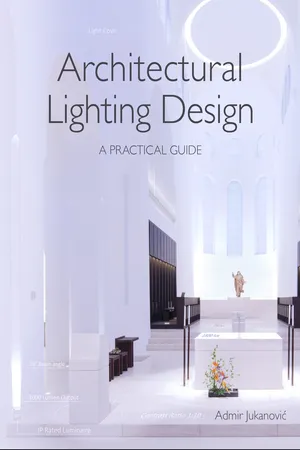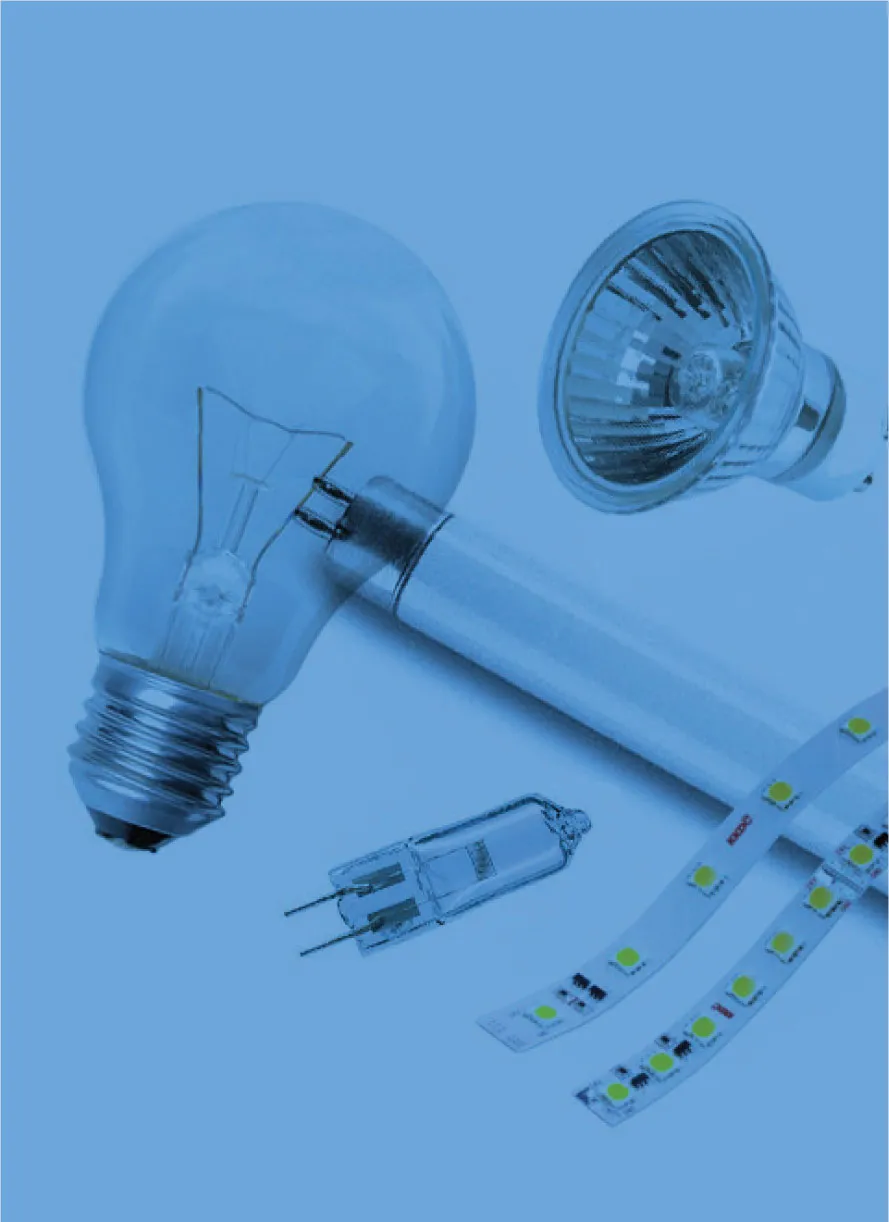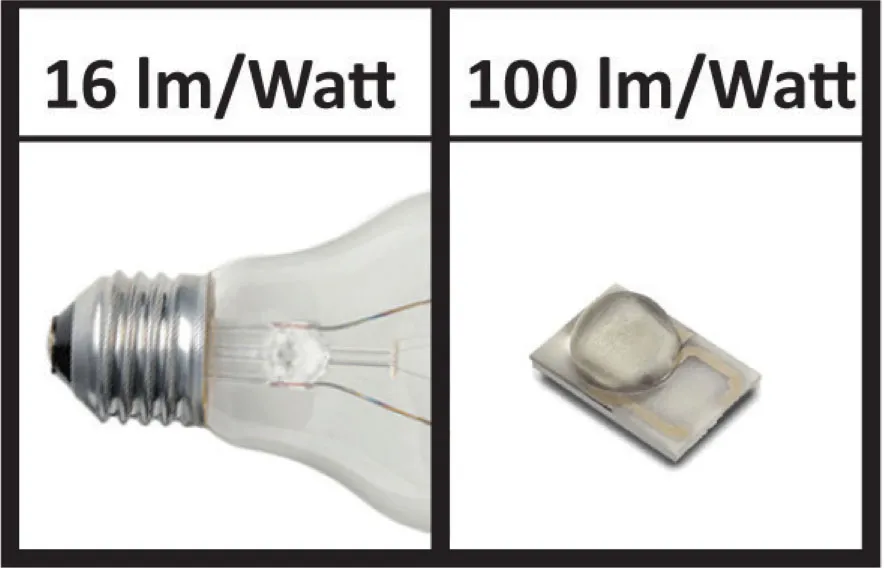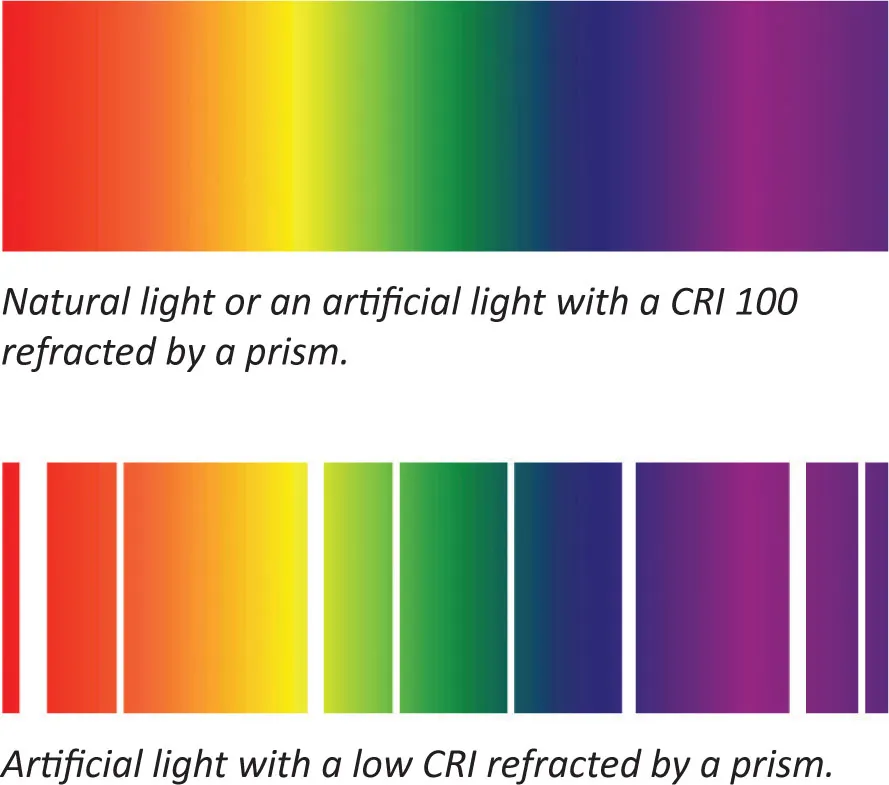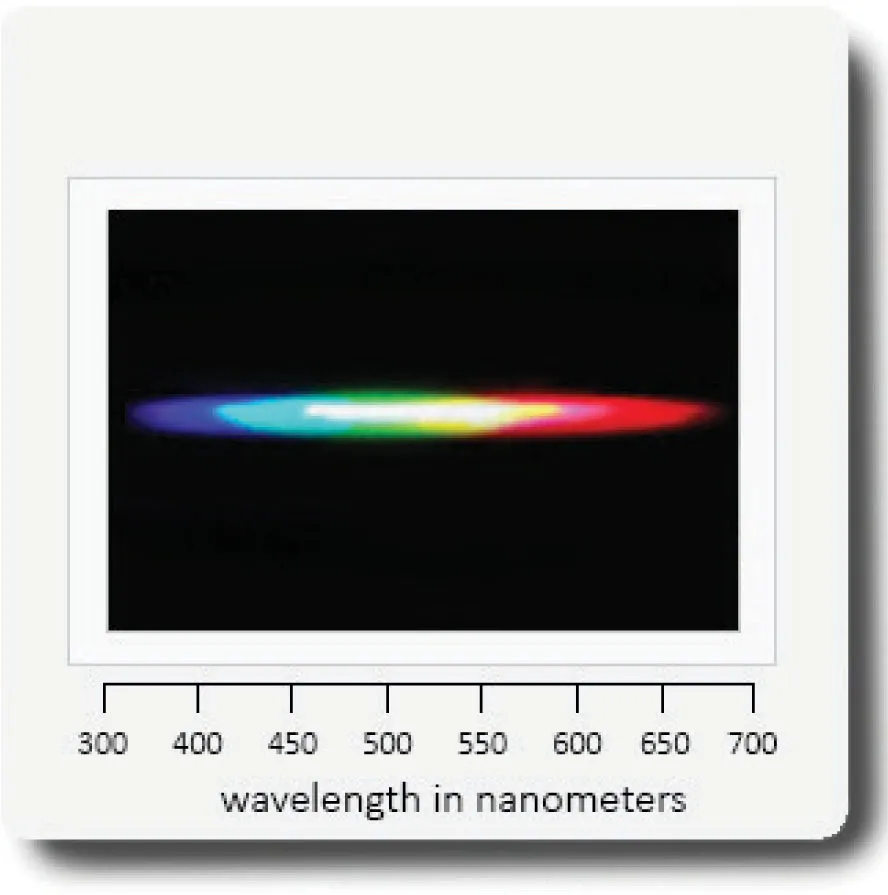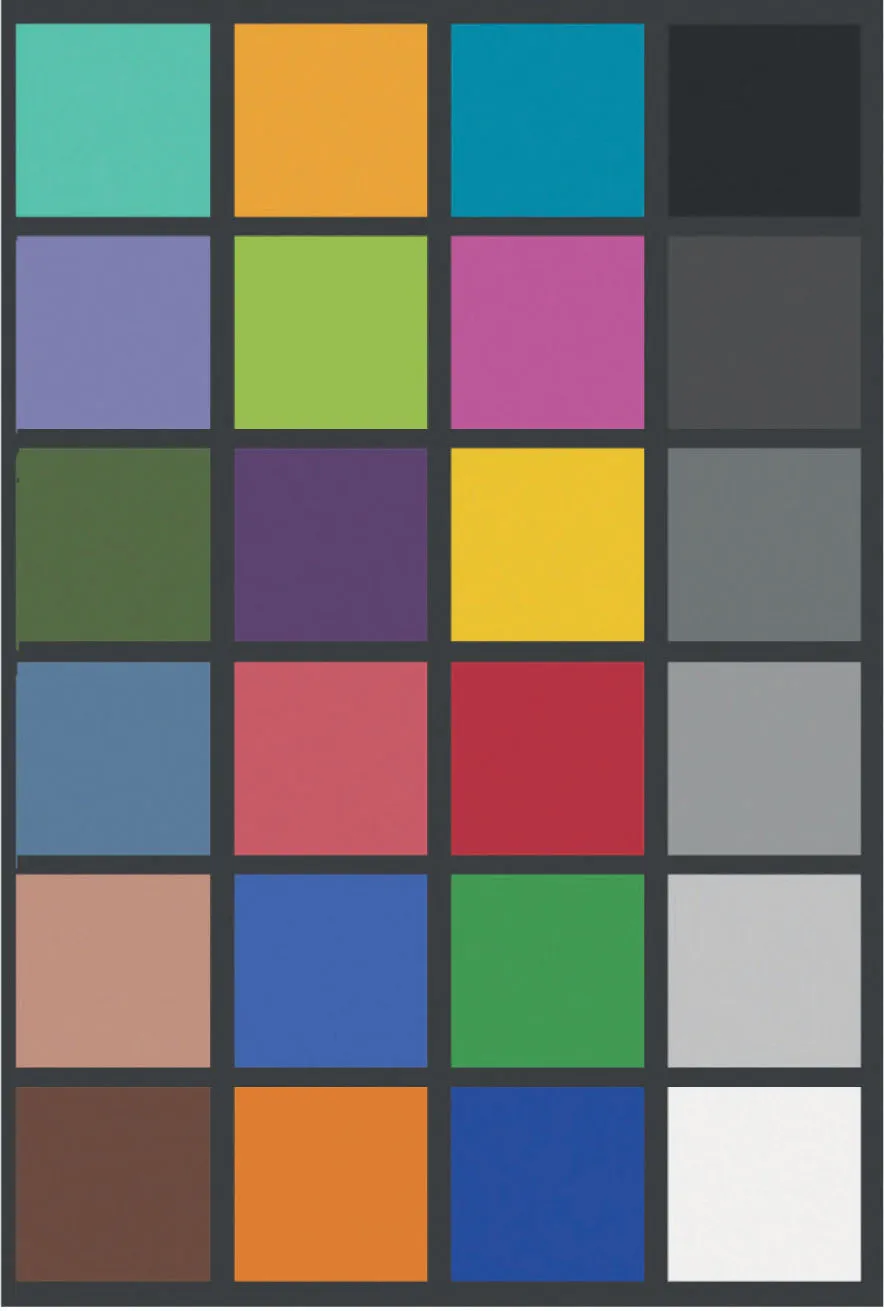![]()
Chapter 1
THE BASICS – LAMPS
BEFORE GETTING INTO THE BASIS OF artificial lighting, the so-called light source, let’s take a brief look at its terminology. What most people don’t know is that what normal people call a bulb is actually a lamp. Mind you, most of the lamps used today do not come in bulbous shapes anymore but are available in various shapes from the tube to the sphere to the cone. Each light source, whether fluorescent, gas-discharge, LED or incandescent, should ideally be called a lamp.
Fig. 1.01 Different types of lamps.
THE LUMINAIRE
To make things more confusing, people not involved in the lighting industry call a light fixture a lamp. When the oil light fixture got replaced by the safer and brighter gas light fixture and then by the safer and brighter electric incandescent light fixture people understandably decided to call it ‘the lamp’ only. In the lighting industry, however, it is still called the light fixture, light fitting or, more elegantly, the luminaire.
Fig. 1.02 A luminaire by the Artemide.
ALL ABOUT EFFICIENCY
Since the invention of the practical electric incandescent lamp by Swan/Edison in 1878/1879, many improvements have taken place. Lamps have either become more efficient or smaller or have a greater life expectancy. However, the improvement of one aspect of the light source doesn’t mean all the attributes have improved. Whilst some lamps improved in life expectancy and efficiency they lost the capacity to be dimmed. Being able to differentiate between the various parameters of each lamp is crucial when working and designing with light.
One of the most important parameters defining the quality of a lamp is its efficiency. Due to the introduction of the electric meter reader, rising electricity prices and increased ecological awareness the efficiency of lamps has become ever more important. The following explanations should help you to understand what defines the efficiency of a light source.
Wattage
We all know that a watt is a power unit and that more wattage means more power for a light source. So, if one wants a brighter light source, knowing the wattage helps to quantify the light output. The light output increases with an increasing wattage. Therefore, a higher wattage seems to be better and should give more light. This, however, applies only when comparing apples to apples. For example, a 35w metal halide lamp produces more light than a 100w incandescent lamp. Knowing the wattage does not allow us to compare the light quantity of various light sources. We need to take a look at another aspect of the light source as well.
Luminous intensity: (areal intensity)
The intensity of a light is best defined by its luminous intensity. Luminous intensity of emitted light is measured in candela. This reveals the concentration of emitted light per second by a light source shining in one direction and at a solid angle. It takes into consideration only the wave spectrum our eyes are capable of processing.
Fig. 1.03 Luminous intensity – areal intensity.
Lumens: (overall intensity)
The second parameter is the lumens output. If one wants to know how much light a lamp emits, one has to know how much lumen it produces. Lumen is a measure for all the visible light emitted by a light source. These figures are very useful as they give us an indication of how much light a lamp emits in total or what overall output one can expect from a lamp. It is still not enough to evaluate the efficiency of a light source, however, as it doesn’t include the energy or the wattage used in achieving this output.
Fig. 1.04 Luminous intensity – overall intensity.
Luminous efficacy
Here the luminous efficacy comes in as it defines the lumens per watt a light source emits. This is probably the best way to compare apples to oranges as it reduces every light source to a basic efficacy ratio. Now we can compare the efficacy of any light source. We can compare the light output of an incandescent lamp of 16lm/w with a state-of-the-art LED light source producing 100lm/w.
Fig. 1.05 Luminous efficacy.
ALL ABOUT QUALITY
Despite its many appealing features, one cannot say that an LED light is in all aspects superior to an incandescent light source. The light produced by incandescent lamps is, in most cases, perceived as ‘more natural’ and these lamps reproduce colours with more depth and intensity than other light sources. As a matter of fact, the incandescent lamp acts together with daylight as our benchmark when it comes to natural light colour reproduction. There are a few LED modules that can mimic and exceed incandescent lamps in CRI.
Colour Rendition Index (CRI)
Until the introduction of replacements for the incandescent lamp we didn’t have to pay attention to colour rendition. The incandescent light source produced a light perceived as warm and natural. The colours lit by the incandescent lamp appeared true when compared with a natural light. Shortly after the first incandescent replacements were introduced, people started to realize that the quality of the light did not match Edison’s/Swan’s original or natural light. The colours lit by the replacements appeared duller and flatter. The best way to visualize and understand this is to compare the light that different lamps produce by analysing their emitted light spectrum. While incandescent light, when split by a prism, produces a continuous spectrum of light colours, fluorescent light is able to produce only an interrupted, incomplete light colour spectrum. Its colour rendition is compromised accordingly as it lacks elements of the light spectrum that allow it to reveal colour accurately.
Fig. 1.06a Natural light or an artificial light with a CRI 100 refracted by a prism.
Fig. 1.06b Light diffraction with a 35mm (1.4in) slide to evaluate the colour rendition of a light source.
The colour rendition of a fluorescent lamp or high-pressure sodium light sources is low when compared to the ideal natural light. The Colour Rendition Index (CRI) has been introduced so we can measure the capacity of a light source to display colours faithfully when compared to a natural or ideal light source. The ideal or best CRI is 100 and is reproduced by natural light, incandescent lamps or halogen lamps. All trustworthy manufacturers are able to present the CRI of their product. If this is not the case, one should refrain from specifying the light source. There are, however, various methods to check a light source’s colour renditions. The numeric CRI value can’t be verified like this, but this kind of checking nevertheless allows for a subjective comparison and evaluation.
One could buy an expensive light meter that can provide an accurate colour rendition graph, but the easiest and most cost-effective way to test colour rendition is to consider a lamp with a spectroscope, which one holds against the light’s source.
Light passes through the foil, creating all visible spectral light colours. If it shows all spectral colours, the colour rendition is good while a lower colour rendition will produce gaps in some of the areas. This approach shows the colour wave length the light is lacking but not the effect it has on colours. This can be checked with a colour checker also called a colour rendition chart.
A colour checker allows one to see how colours will look under the light sources they are exposed to. It is a black card board with twenty-four coloured squares mounted onto it. The colour checker contains a representation of colours from real objects, such as skin or foliage to primary, secondary, miscellaneous and greyscale colours.
Fig. 1.07 Colour rendition chart.
If all colours are shown correctly when compared with an ideal light source, the rendition can be considered as good. Originally introduced to verify correct lighting in photography and movie-making it is also increasingly used today by critical lighting professionals as benchmark chart.
Colour temperature
Fig. 1.08 Colour temperature scale.
When entering a DIY shop to try and buy a white paint one realizes quickly that there is no single white on display but a variety of whites. One realizes quickly that the shopping might take a bit longer than anticipated as the decision about which white to paint our walls with is, of course, important to us. The same applies to white light sources. There is no single white light source in a shop display but a variety of white light colours and it is important that the white light one chooses feels right. The colour temperature of white light is measured in kelvins and ranges from the warm 1700K of a candle to the cold bluish 20000K of the arctic sky. Our sun is a great example of the variance of white light. The sun emits in the morning and evening a warm white light, creating visually warm surfaces. The light gets increasingly cold, reaching its peak when the sun is at its highest point in the sky.
Artificial light sources seek to mimic daylight and are available in all colour temperatures. They start from a very warm 2400K and usually end with the cold 6500K. The colour temperature 4000K is perceived as neutral white, neither assignable to the warm spectrum of white light nor to the cold spectrum.
Colour temperature preferences
The preferences towards colour temperature vary from country to country. In northern countries, warm light is generally the preferred choice. A warm light seems more inviting in a region dominated by cold nights and days throughout the years. In southern countries however, the opposite is the case...
